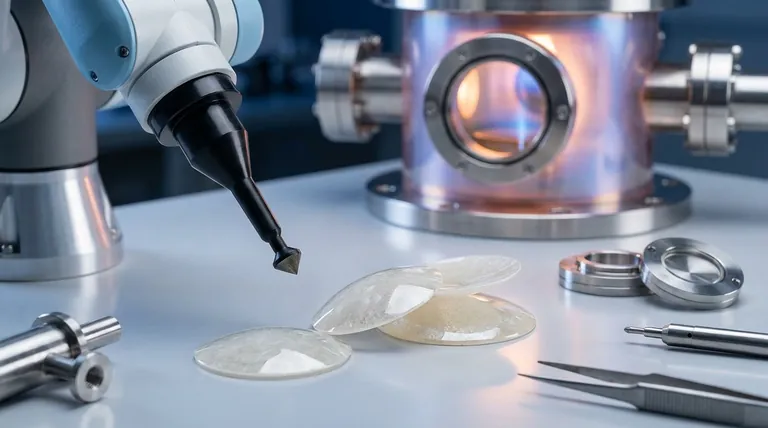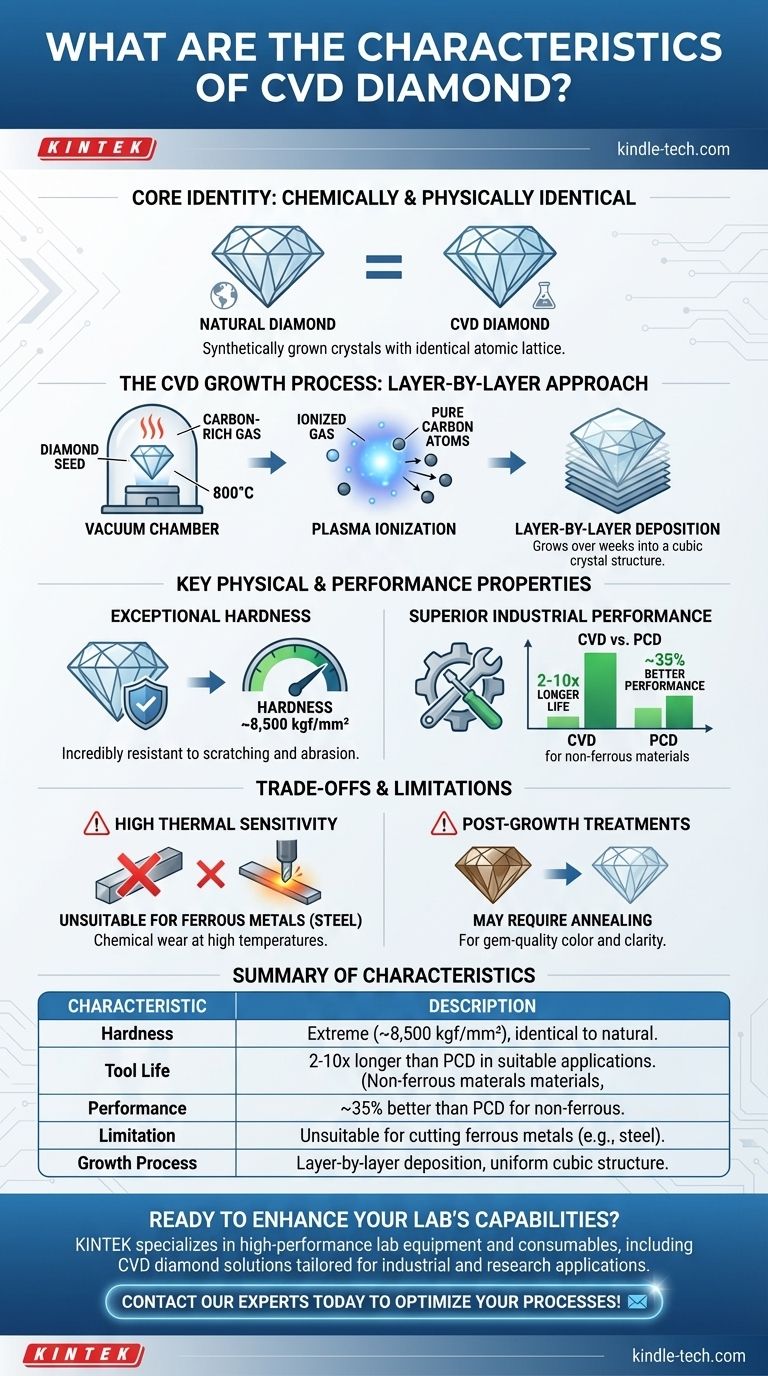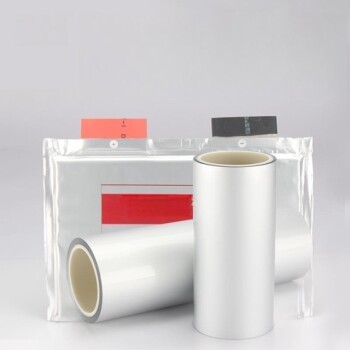At their core, CVD (Chemical Vapor Deposition) diamonds are synthetically grown crystals that are chemically and physically identical to natural diamonds. Their defining characteristics stem from their unique manufacturing process, resulting in a cubic crystal structure with exceptional hardness, but also specific performance limitations, particularly regarding heat.
The crucial takeaway is that CVD diamonds are not imitations; they are genuine diamonds. Their distinct layer-by-layer growth process, however, imparts unique structural traits that make them exceptionally well-suited for certain high-performance applications while creating specific limitations in others.

The CVD Growth Process: A Layer-by-Layer Approach
To understand the characteristics of a CVD diamond, you must first understand how it is made. The process directly influences its final structure and properties.
How CVD Diamonds Are Made
A thin slice of a diamond, known as a diamond seed, is placed inside a sealed vacuum chamber. The chamber is heated to approximately 800°C and filled with a carbon-rich gas. This gas is then ionized into a plasma, causing pure carbon atoms to break free and deposit onto the diamond seed, building the crystal layer by layer over several weeks.
Resulting Crystal Structure
This method produces a diamond with a distinct cubic shape that grows in a single direction. This uniform growth can occasionally create internal strain lines, though these are rare and typically only visible under extremely high magnification. The raw crystals may also have rough edges of graphite that must be cut away.
Key Physical and Performance Properties
While grown in a lab, the physical properties of a CVD diamond are fundamentally the same as a mined diamond, making it one of the hardest materials known.
Exceptional Hardness
A CVD diamond possesses the same atomic lattice as a natural diamond, giving it an extreme hardness of around 8,500 kgf/mm2. This makes it incredibly resistant to scratching and abrasion.
Superior Industrial Performance
In industrial applications, CVD diamond tools demonstrate a significantly longer lifespan—often 2 to 10 times longer than Polycrystalline Diamond (PCD) tools. They perform approximately 35% better than PCD in suitable applications, such as machining auto parts and other non-ferrous materials.
Understanding the Trade-offs and Limitations
No material is perfect for every application. The unique properties of CVD diamonds also come with specific constraints that are critical to understand.
High Thermal Sensitivity
The primary limitation of CVD diamond tooling is its unsuitability for cutting steel or other ferrous metals. The high temperatures generated during the machining of steel can cause the diamond's carbon atoms to react with the iron, leading to rapid chemical wear and tool failure.
Necessary Post-Growth Treatments
For gem-quality applications, CVD diamonds often emerge from the growth chamber with a brownish color. They typically require a post-growth treatment process, such as annealing, to decolorize them and improve their clarity for use in jewelry.
Making the Right Choice for Your Application
Understanding these characteristics allows you to select the right type of diamond for your specific goal, whether it's for an industrial tool or a piece of fine jewelry.
- If your primary focus is industrial tooling: Choose CVD diamonds for machining non-ferrous materials like aluminum or composites, where their exceptional hardness and long tool life offer a clear performance advantage over PCD.
- If your primary focus is gem-quality jewelry: Recognize that the beauty of a CVD diamond, like any diamond, is determined by its cut, color, and clarity—not its origin. The final appearance is a result of craftsmanship.
- If your primary focus is advanced technology: Leverage the unique properties of the CVD process for applications like thin-film diamond coatings, where a uniform, single-direction crystal layer is a distinct advantage.
Ultimately, the characteristics of a CVD diamond are a direct result of its controlled, layer-by-layer creation, offering predictable performance for those who understand its strengths.
Summary Table:
| Characteristic | Description |
|---|---|
| Hardness | Extreme hardness (~8,500 kgf/mm²), identical to natural diamond. |
| Tool Life | 2-10x longer lifespan than PCD tools in suitable applications. |
| Performance | ~35% better performance than PCD for machining non-ferrous materials. |
| Limitation | Unsuitable for cutting ferrous metals (e.g., steel) due to thermal sensitivity. |
| Growth Process | Layer-by-layer deposition, resulting in a uniform cubic crystal structure. |
Ready to enhance your lab's capabilities with precision diamond tooling? KINTEK specializes in high-performance lab equipment and consumables, including CVD diamond solutions tailored for industrial and research applications. Our expertise ensures you get the right tools for machining non-ferrous materials, composites, and more—delivering longer tool life and superior results. Contact our experts today to discuss how CVD diamond technology can optimize your processes!
Visual Guide

Related Products
- CVD Diamond Domes for Industrial and Scientific Applications
- Laboratory CVD Boron Doped Diamond Materials
- CVD Diamond Cutting Tool Blanks for Precision Machining
- Cylindrical Resonator MPCVD Machine System Reactor for Microwave Plasma Chemical Vapor Deposition and Lab Diamond Growth
- RF PECVD System Radio Frequency Plasma-Enhanced Chemical Vapor Deposition RF PECVD
People Also Ask
- What is the difference between CVD diamond and natural diamond? A Guide to Making an Informed Choice
- Do CVD diamonds have resale value? The Truth About Lab-Grown Diamond Investment
- How much does CVD diamond equipment cost? A Breakdown of Investment from Lab to Production
- How thick is diamond coating? Achieve Unprecedented Precision with Ultra-Thin Films
- What is the hardness of CVD diamond? The Ultimate Guide to Engineered Super-Materials














